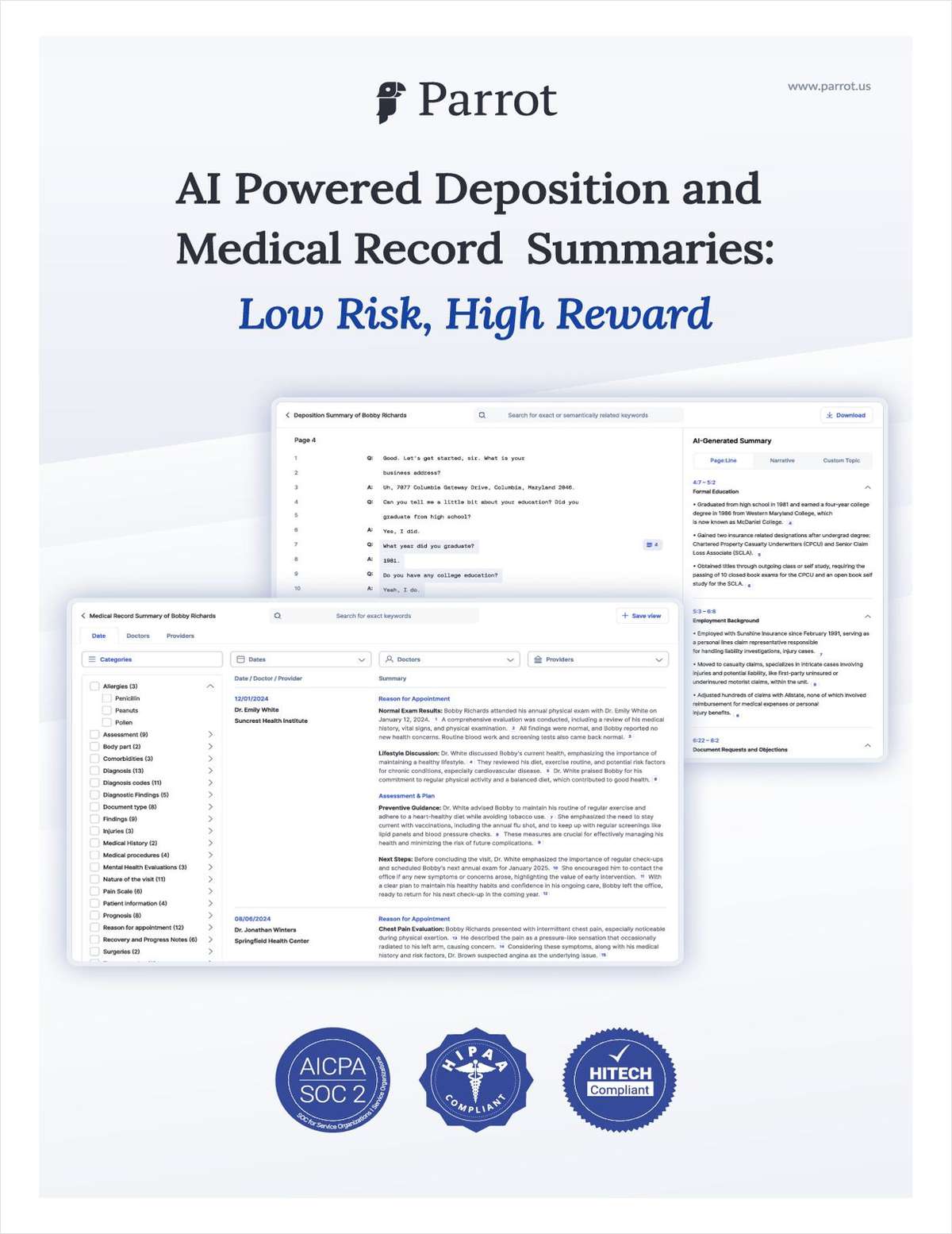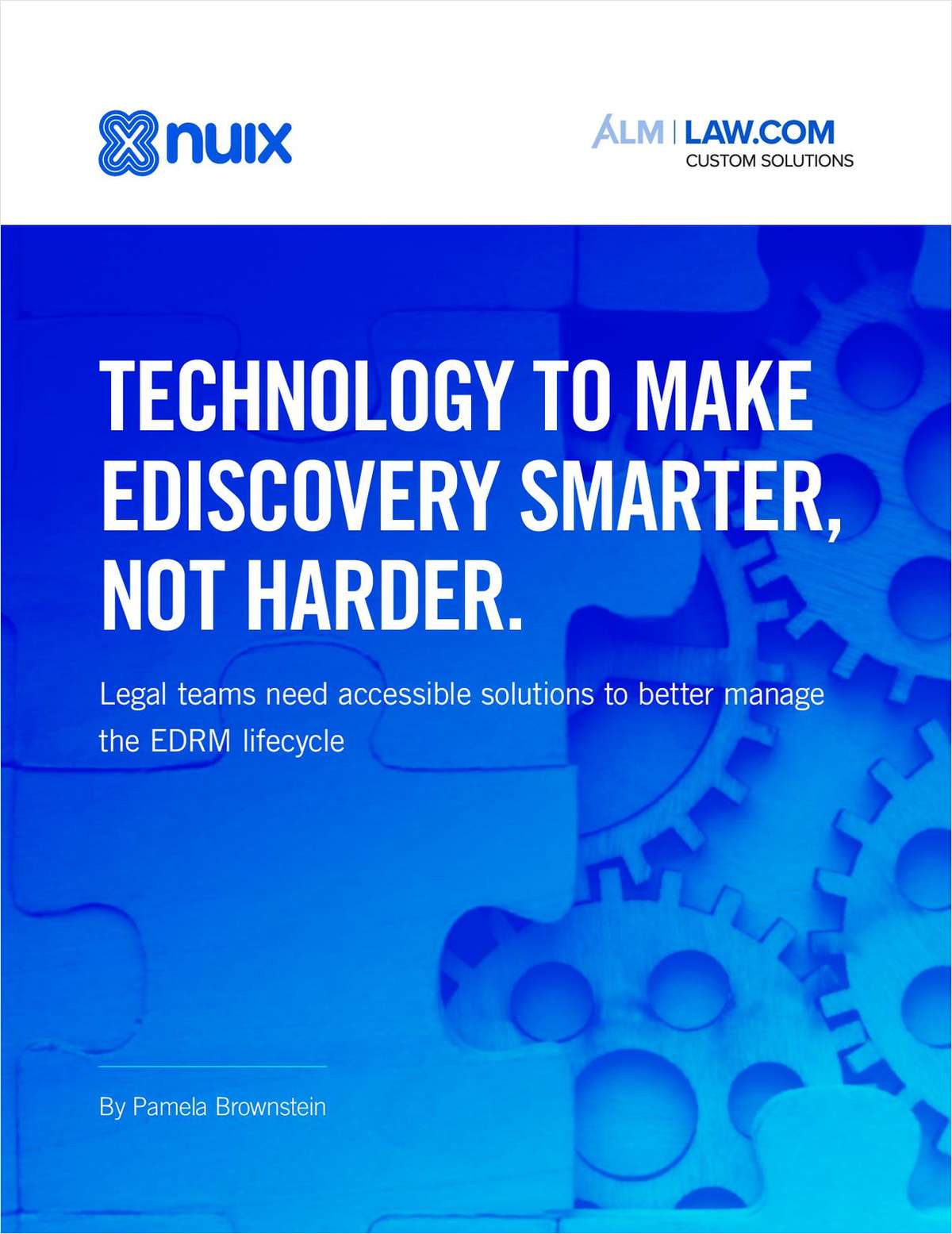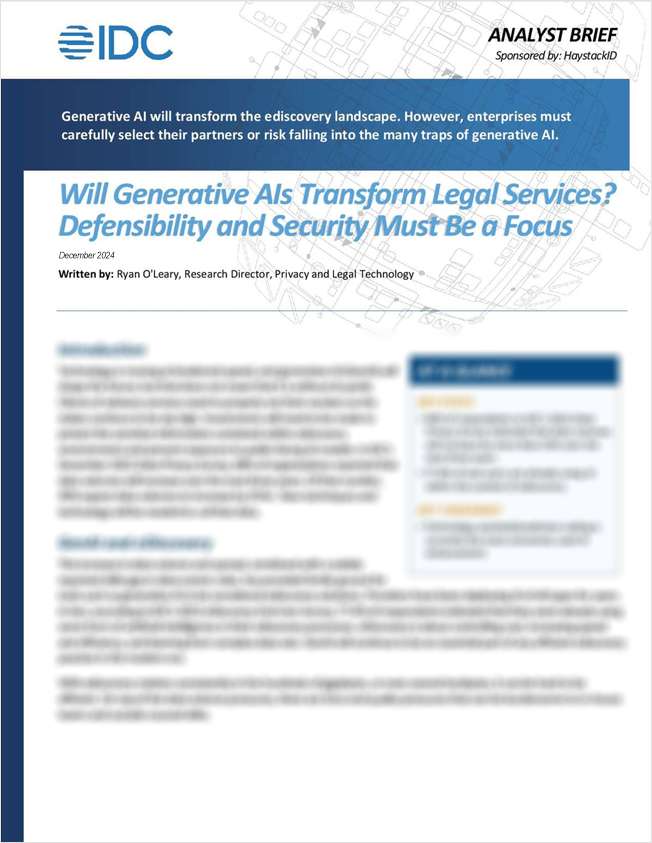 Upon my recent retirement after 25 years as a New York State Supreme Court justice, I have embarked on a similar but not identical career of being what is popularly known as a neutral/mediator/arbitrator. For the last 17 years of my tenure on the bench, I was assigned to the calendar control part, formerly known as the trial assignment part. During that time, in addition to serving as a trial judge, my primary focus was maintaining the efficient flow of cases on the ready trial calendar. The responsibility of presiding over these daily calendars of trial ready cases for years provided me with valuable experience mediating and settling cases.
Upon my recent retirement after 25 years as a New York State Supreme Court justice, I have embarked on a similar but not identical career of being what is popularly known as a neutral/mediator/arbitrator. For the last 17 years of my tenure on the bench, I was assigned to the calendar control part, formerly known as the trial assignment part. During that time, in addition to serving as a trial judge, my primary focus was maintaining the efficient flow of cases on the ready trial calendar. The responsibility of presiding over these daily calendars of trial ready cases for years provided me with valuable experience mediating and settling cases.
At first blush one may think that the role of a judge engaged in the process of mediating settlements is basically the same as that of a neutral. There are indeed some similarities. However, now that I am on the other side of the bench, I have learned that in fact, there are significant differences that practitioners should keep in mind when comparing private alternative dispute resolution and mediation in the court. Examples of such differences include the available tools and conditions of participation in both processes, the expectations of the parties in each arena and the attention span of a neutral vs. that of a judge.
Obviously, a paramount function of a judge is to preside over trials. A judge typically will have hundreds of cases on his or her calendar that need to be supervised through discovery and the filing of a note of issue. Foundational to the idea of resolving a dispute in court means ultimately being prepared to engage in a trial before either a jury or the court. Unfortunately, there are more pending cases where the parties will not or cannot settle than there are available trial judges. This disparity inevitably results in backlogs and delays in reaching a resolution through a trial. Depending on the volume of cases pending in a particular venue, these delays can be frustrating. The pandemic and its aftermath have only exacerbated those backlogs. Judges in every part of the state are subject to pressure from the court's administrators to comply with standards and goals that mandate cases in their inventories to proceed expeditiously. Judges subject to these problems can often be distracted and stressed, unable to spend concentrated extended time attempting to engage in settlement/mediation efforts.
While it varies depending upon the individual, when a judge has the opportunity to participate in settlement talks, the nominal process can be similar to what takes place before a private neutral. However, the context within which the process proceeds is very different when a private neutral is mediating a case. For one thing, the paramount function of a neutral engaged in private alternative dispute resolution is to settle the one case that is before the neutral at that time. A private neutral is not subject to the distractions that beset a judge when other cases are competing for the court's attention. The singular, uninterrupted, focus that a private neutral can employ is of great significance and in my experience is a luxury that a sitting judge seldom if ever enjoys.
Expectations and Methods Parties to litigation on the court's trial calendar generally expect to prevail and to win the dispute. Often, a party is unwillingly involved in the lawsuit as it winds its way through the court system. As a result, the parties are not typically looking to voluntarily participate in a settlement process that requires compromise. When one side is convinced of the justness of their cause they will usually engage in settlement talks only when placed under duress.
One point of departure between neutrals and sitting judges is the leverage that a judge may exercise by reminding the parties if they fail to settle their case, they may well find themselves on trial within days, if not that very day. The parties are not necessarily ready to try their case on a schedule that is in sync with the court's requirements. It is at this point that the primary tool available to a judge to settle cases is activated and parties can be "forced" to settle. The court wields immense power with its ability to compel a trial.
However, a neutral has no such power and as a result he or she must rely upon three things to successfully settle a case. Of primary importance is the mutual desire of the parties to settle rather than try their case. The good faith willingness of the parties to attempt a settlement, as opposed to the intransigence noted above that "true believers" in the righteousness of their cause possess, is an advantage for a neutral that a judge may not have.
Secondly, the voluntary participation of the individual parties to be present and to pay for the services of the neutral works to the advantage of a neutral. A judge has the authority to compel the attendance of the parties to a litigation, but in my experience, judges do not always have the time to utilize that power. Even if a judge does have the time and the inclination, unless a party is genuinely interested in a settlement, it likely will not happen. Contrast this fact with the voluntary appearance of a litigant before a neutral, hopeful of a settlement. As a former judge, this advantage for a neutral is considerable.
Finally, the abilities of the neutral to persuade the parties to see the risks and the strength of each other's case is perhaps the neutral's greatest asset. An experienced neutral, whether a former judge or an experienced practitioner, has this ability.
Expectations of participants with a neutral engaged in the mediation process are very different from expectations of those parties with cases pending on the court calendars. Voluntary participants in mediation are participating in this process so as to resolve their disputes sooner rather than later; sometimes years sooner than would be possible in the courts. The neutral can utilize this expectation in helping to create a settlement that is reasonable to both sides.
Neutrals also have the advantage of being able to give undivided attention to the one case that they are being asked to mediate. They are not burdened by pressures from the court administrators and the demands of dozens of other cases on their dockets on any given day. Further, neutrals have the advantage of having the parties submit written position statements that set forth their arguments in advance of the mediation. In the courthouse, a judge rarely has that luxury, and often the judge is only presented with the arguments of the parties “on the fly.” The fact that the neutral has knowledge of the case before proceeding with settlement/mediation is a significant plus for the neutral and only enhances the neutral's focus on the matter.
Expectations of the parties are also shaped by the personality of either the judge or the neutral. In the courthouse, judges are of course randomly assigned to cases. The parties to a pending case on the court's calendar are never allowed to select a particular judge to hear their dispute. As a result, the parties' ability to settle a case is very often influenced by the experience and reputation of the judge assigned.
On the other hand, the decision to voluntarily participate in mediation or arbitration presents both sides with the opportunity to mutually agree on a person they choose. The neutral that they agree upon provides each side with some assurance that they will retain some degree of control over their outcomes and enhances the likelihood of an earlier resolution of the case.
During my time with NAM, I have seen the advantages to attorneys and their clients of ADR on a daily basis. As a former long-time judge and now a recently minted neutral, I value the advantages afforded by ADR to resolve cases in a more focused setting while simultaneously employing the skills and experience I have acquired over 25 years.
The Honorable Paul J. Baisley, Jr. is a retired Justice of Supreme Court, Suffolk County, and is a member of NAM's (National Arbitration and Mediation) Hearing Officer Panel. For 25 years, Judge Baisley presided over and settled more than a thousand cases, giving him a broad range of experience and knowledge across numerous case types including commercial, employment, insurance, labor law, fraud, matrimonial, medical malpractice, negligence, personal injury, premises liability, and real property/real estate (commercial and residential). Judge Baisley is known and respected for his legal acumen and his ability to resolve conflict in an unbiased manner. He is available to arbitrate and mediate cases throughout New York State.
For any questions or comments, please contact Jacqueline I. Silvey, Esq. / NAM General Counsel, via email at [email protected] or at 646-737-1414 ext. 128.








